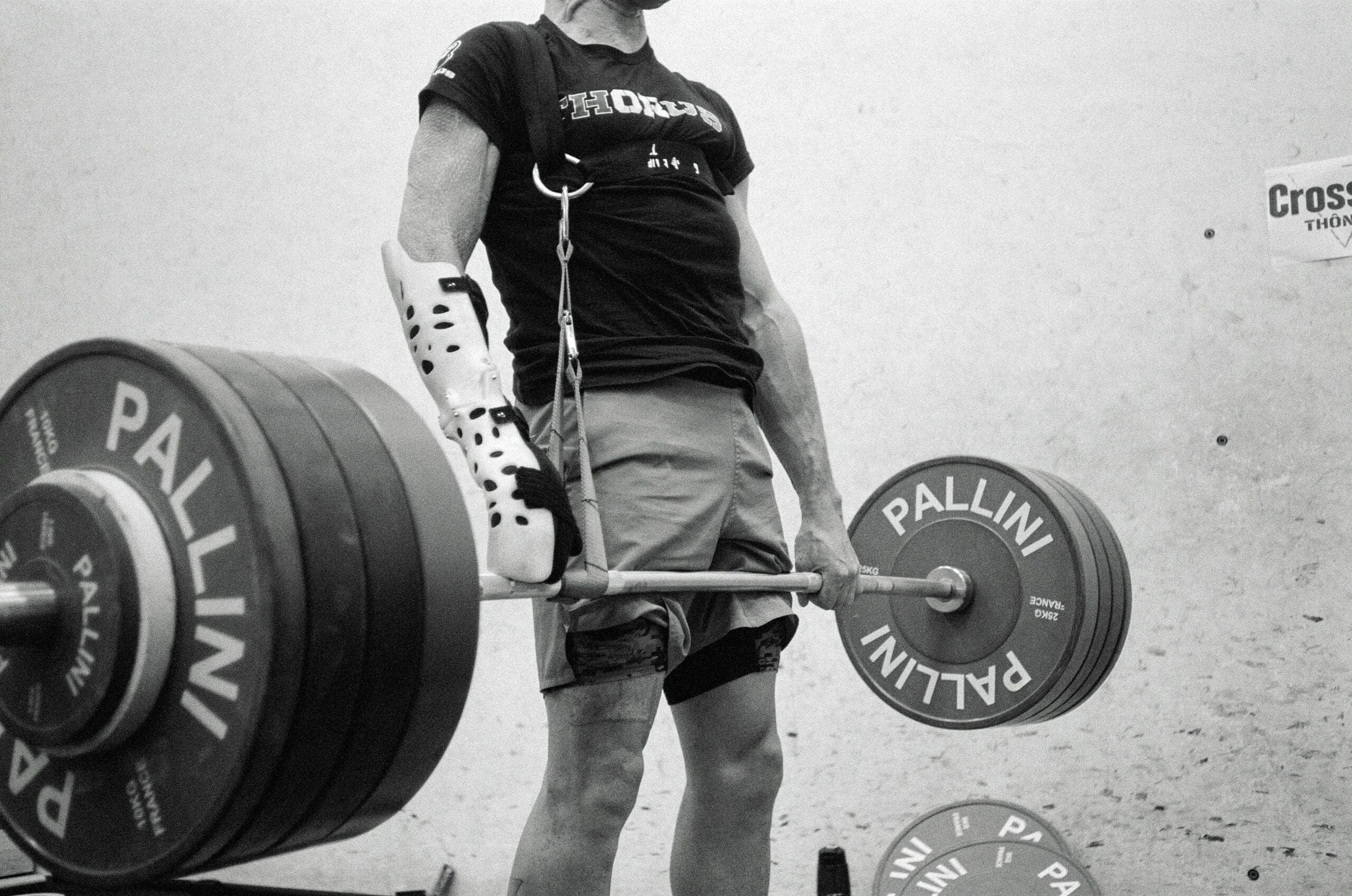Maintaining strength is essential for mixed martial artists who rely heavily on pulling movements during grappling, clinch work, and general control. Pull exercises help reinforce key muscle groups, such as the back, biceps, and forearms, which are crucial for maintaining positions, defending takedowns, and executing submissions. Incorporating a structured pull routine can help MMA fighters retain functional strength throughout their training cycles.
If you need convincing, Men’s Health had a great article on Francis Ngannou, who many argue has some of the most intense training in the MMA universe. The Cameroon-born fighter has a huge load of pull exercises that have led to his awesome physicality in his fights and has Dana While almost begging him to come back post-Jon Jones.
Face Pulls For Shoulder Health
While not a heavy strength movement, face pulls are essential for shoulder health and upper-back endurance. They target the rear deltoids, traps, and rotator cuff muscles—all of which contribute to maintaining postural control and preventing injury. Face pulls are typically performed using cable machines with a rope attachment, pulling the rope toward the face while keeping the elbows high and shoulders externally rotated.
This movement helps counteract the internal rotation caused by striking and grappling, promoting healthier shoulder mechanics over time.
Deadlifts For Full-Body Strength
Deadlifts are one of the most effective pull exercises, targeting the posterior chain, which includes the hamstrings, glutes, lower back, lats, and traps. This movement translates well to MMA by improving the strength needed to lift opponents off the ground and maintain structural balance. A standard barbell deadlift is ideal for most fighters. For variety or to reduce stress on the lower back, trap bar deadlifts are also an effective option.
Fighters can use moderate weight and low-to-moderate reps (3–6 reps per set) to build strength while avoiding unnecessary fatigue during fight camps.
Pull-Ups For Upper Body Power
Pull-ups are a bodyweight staple that develops upper body strength, grip endurance, and back control. This exercise strengthens the lats, biceps, and forearms—muscles essential for clinch work and submissions. Variations like neutral-grip pull-ups can reduce shoulder strain, while weighted pull-ups add resistance for advanced athletes.
For MMA, strict pull-ups with controlled form are preferred over kipping variations to build functional strength. Aim for 3–5 sets of 5–10 reps, depending on experience level.
Barbell Rows For Back Development
Barbell rows help develop mid-back thickness and strengthen the rhomboids, traps, and rear delts. These muscles enable scapular retraction, a crucial component in controlling opponents during grappling exchanges.
The bent-over barbell row is one of the most effective variations of the row exercise. Maintaining a strong hip hinge position also reinforces core stability. Fighters should use a controlled tempo to maximize tension, focusing on squeezing the shoulder blades at the top of each rep.
Dumbbell Rows For Unilateral Strength
Dumbbell rows offer the advantage of unilateral training, helping correct muscular imbalances and improve arm-specific pulling power. This can be particularly beneficial for MMA athletes, who often develop a dominant side based on their stance and preferred techniques.
Single-arm dumbbell rows also offer a greater range of motion than their barbell counterparts. Fighters can brace on a bench or perform unsupported rows to increase core engagement. Moderate reps (8–12) per side allow for strength gains and muscular endurance.
Inverted Rows For Scalable Resistance
Inverted rows, also known as bodyweight rows using a bar or suspension system, offer a scalable alternative to pull-ups. They strengthen the upper back and arms while being easier to recover from than heavier lifts.
Fighters can adjust the difficulty by changing their body angle or elevating their feet to suit their needs. This makes the movement accessible to all training levels. Inverted rows are also beneficial in circuits, as they combine strength with cardio conditioning.
Bicep Curls For Arm Endurance
Though often considered a bodybuilding exercise, bicep curls have utility for MMA. The biceps are heavily engaged in grappling and controlling an opponent’s limbs. Direct training can help improve muscular endurance and reduce arm fatigue in high-tension scenarios.
Curls with a barbell, dumbbell, or resistance band can all be effective. Fighters should prioritize controlled reps (10–15) with moderate resistance to build endurance without excessive soreness or bulk.
Hammer Curls For Grip Strength
Hammer curls offer a variation that emphasizes the brachialis and forearm muscles, contributing to grip strength. In MMA, a strong grip is crucial for maintaining wrist control, executing under hooks, and executing submission attempts. Using a neutral grip (palms facing each other), fighters can perform 3–4 sets of 8–12 reps. This complements other grip-based exercises while strengthening muscles that support elbow and wrist joints.
Rope Climbs For Functional Application
Rope climbs are a high-skill pull movement that mimics many real-life grappling scenarios. They develop pulling power, core stability, and coordination. While not always accessible in commercial gyms, they are ideal for fighters who have access to proper equipment.
Alternatives, such as towel pull-ups or rope rows, can simulate similar grip and pulling challenges. Rope-based training can be incorporated once or twice a week during general strength phases.
On A Final Note on MMA Pull Exercises
Pull exercises are a key part of strength maintenance for MMA fighters. From compound lifts like deadlifts and pull-ups to targeted movements like face pulls and curls, a well-rounded pull routine builds essential muscle groups that directly translate to better performance in the cage. Consistent implementation helps fighters stay strong, durable, and injury-resistant across all phases of training.
Photo by Quentin Durand on Unsplash
